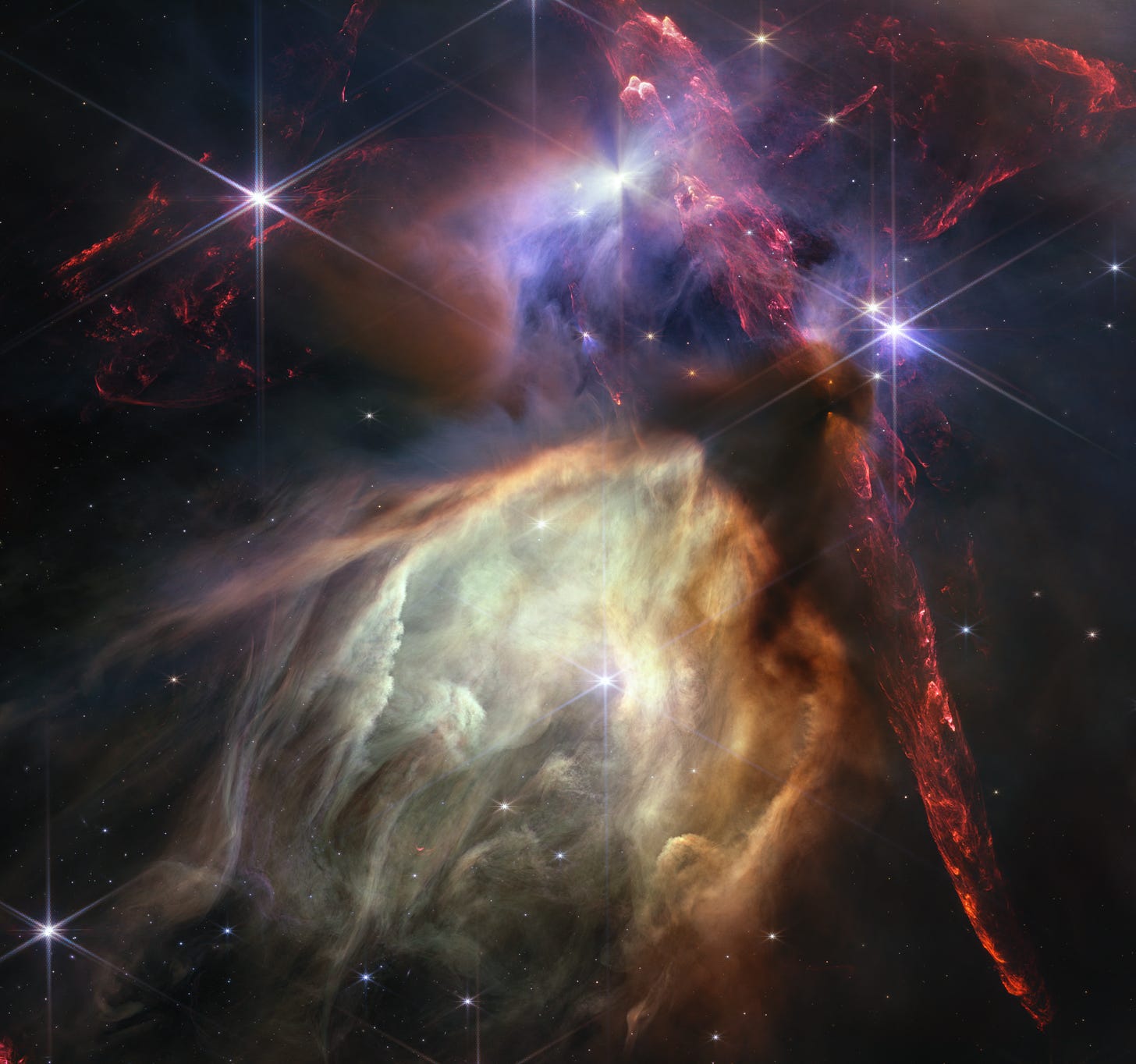
With so much riveting us here on Earth, it is easy to forget that up there, out there in the High Frontier — outer space, the far cosmos, whatever you choose to call it — exciting, promising accomplishments are happening that will profoundly affect our future.
There is a reminder today as NASA marks the first birthday of the James Webb Space Telescope. Like any proud parent, NASA is sharing pictures. And these are literally out of this world (our apologies for the silly dad/grandad jokes, but we couldn’t resist).
When we look at the photo above, we see awe-inspiring beauty and mystery. But we also see the wonder and ingenuity of science. We’ll leave it to NASA Administrator Bill Nelson to put what we’re seeing into better context:
In just one year, the James Webb Space Telescope has transformed humanity’s view of the cosmos, peering into dust clouds and seeing light from faraway corners of the universe for the very first time. Every new image is a new discovery, empowering scientists around the globe to ask and answer questions they once could never dream of.
Empowering new questions. Isn’t that the very essence and promise of science? And that’s part of what makes this so exciting. It’s not just what we now have the ability to see — it’s all the unpredictable insights that will follow.
Putting a powerful extension of our human senses into space requires harnessing tremendous amounts of intellect. It requires planning, commitment, and funding. It requires a belief that our innate inquisitiveness as a species should be cultivated. And it requires cooperation. Dr. Nicola Fox, associate administrator of NASA’s Science Mission Directorate, called the Webb Telescope “an engineering marvel built by the world’s leading scientists and engineers.” Indeed.
So what are we looking at exactly? Once again, we will let the rocket scientists at NASA explain. Basically, it’s “star birth like it’s never been seen before.” And if you want a bit more detail:
The subject is the Rho Ophiuchi cloud complex, the closest star-forming region to Earth. It is a relatively small, quiet stellar nursery, but you’d never know it from Webb’s chaotic close-up. Jets bursting from young stars crisscross the image, impacting the surrounding interstellar gas and lighting up molecular hydrogen, shown in red. Some stars display the telltale shadow of a circumstellar disk, the makings of future planetary systems.
The vast majority of the millions of people around the world who will encounter this beautiful picture will not understand its astronomical implications. Even so, we can be comforted that there is a community of researchers — all across the globe — who see with the trained eye of science.
We can also be proud that we live in a country that supports this work. And we can celebrate a quest for knowledge, the yearning to cross horizons, and the intricate dance of data and discovery.
Yes, this image is breathtaking. And that is a reason to smile. But we can also find joy in all that it took to make this celestial camera possible and the future generations who will benefit from the knowledge it unleashes.
Please consider subscribing if you aren’t already a member. This effort is supported by the Steady community.















We understand there have been people impersonating Dan and me in the comments. We have reported them to Substack and have banned the accounts. Substack is working on a technical solution to this problem going forward. In the meantime, we are going to close the comments to nonpaying members for protective purposes. We apologize for the inconvenience and will reopen them once the matter is better resolved.
Thankful for the scientists who give us a window into the universe! I’m also thankful to the scientists who study viruses and genes.